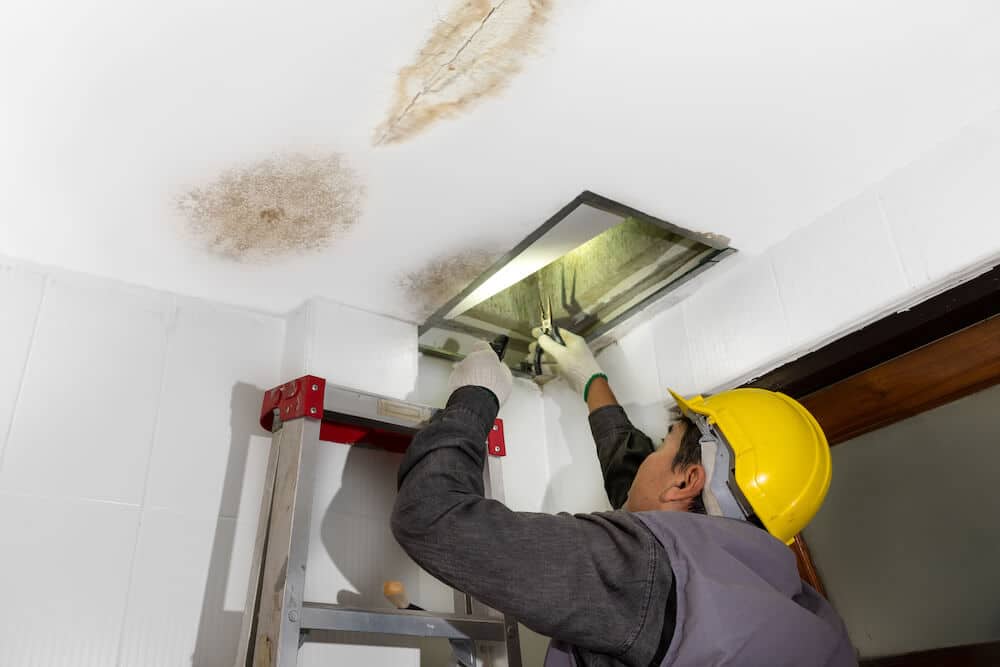https://www.atticprojectscompany.com/locations/wa/No one wants to find mold in their home. It poses a serious problem and can be expensive to deal with. That’s why mold prevention is typically the best course of action.
When it comes to implementing an effective mold prevention plan in Washington, humidity control is one of the most important factors to consider.
Why You Should Know About Mold Prevention
If you’re a first-time homeowner or new to living in an area with a humid climate like Washington, you might not have given too much thought to mold prevention. However, it should be near the top of your list of essential tasks to maintain your home.
First, if a mold infestation takes hold, mold remediation can become a major project. Mold can quickly spread throughout your home, requiring significant material removal, sanitization, and reconstruction — and associated expenses.
You can’t just live with mold, either. It poses a serious health risk to everyone in your home, including a particularly imminent threat to individuals with respiratory conditions, young children, and older adults.
However, anyone can develop health issues related to mold infestation.
Conditions That Lead to Mold Growth
What exactly leads to mold growth? Mold doesn’t just come out of nowhere; it grows from spores that float through the air and eventually deposit on a surface. These spores are almost everywhere, so the most important step toward mold prevention is assessing the conditions in your home.
Mold requires dampness to grow. Moisture can come from standing water or from roof or plumbing leaks. However, at high humidity, mold can draw sufficient moisture from the air and grow anywhere — indoor humidity above 60% poses a high risk of mold growth.
Freezing temperatures can limit mold spread, and very high temperatures can stifle its growth, but both are uncommon in Washington. The ideal temperature range for mold is between 75 and 85 degrees Fahrenheit.
Unfortunately, this means that Washington summers are very conducive to mold growth.
Humidity Levels in Washington
High humidity levels in Washington can make mold prevention a serious challenge. Areas along the coast show very high humidity levels and even inland regions of the state have higher-than-average levels. It’s also important to note that humidity fluctuates throughout the day, being highest in the morning and lowest in the afternoon.
Quillayute and Olympia have average daily humidity levels of 80% and 71%, respectively. Seattle sits somewhat lower at 65%. Inland, you’ll find Spokane and Yakima both at 44%. These are outdoor humidity levels, which certainly impact indoor humidity, but other factors are also at play.
Rainy Season Challenges
During the annual rainy season, Washington sees some of the highest precipitation levels in the country. This rain contributes to overall humidity and leads to saturated ground, standing water, and other factors that can increase humidity in your home.
The Olympic Mountains and the Cascades receive annual rainfall of up to 200 inches. Olympia and Seattle typically receive between 35 and 70 inches. Heavy rainfall is mainly relegated to coastal regions, as some inland regions can see as little as 7 to 9 inches of rain annually.
Why Your Attic Might Be at Risk of Mold
Certain places in your home are at much higher risk of mold, so they’re the key areas to target for mold prevention strategies.
Attics are big problem areas. If attics don’t have proper insulation and ventilation, condensation and moisture buildup can occur due to temperature differences. Moisture from roof leaks can also contribute to mold issues.
An unventilated attic is a real concern because moisture accumulates inside. As the humidity rises, the chance of developing a serious mold infestation is high. Clutter around the attic can worsen the problem, providing materials that are more susceptible to mold.
Controlling Humidity Through Ventilation
Ensuring adequate ventilation is one of the best methods of mold prevention. A steady supply of fresh air can stop excess moisture from accumulating in one area and help regulate humidity.
Ventilation is particularly important in attics. An attic should be closed off from the rest of your home and have its own ventilation system. Proper insulation and ventilation prevent the attic from getting hotter or colder than the air outside, reducing condensation and other issues.
Radiant Barrier Installation
A radiant barrier can improve mold prevention in your attic even further. This barrier delivers a variety of benefits. It prevents radiant heat from penetrating your attic through the roof, which helps prevent condensation. It also provides a seal to keep moisture out.
A radiant barrier can help protect your home while saving you money on your HVAC costs. Without radiant heat affecting your attic, your air conditioner won’t work as hard to maintain comfortable temperatures in your home.
Addressing Existing Mold Problems
Mold prevention is the best approach, but what if your home already has signs of mold? You can’t simply clean up mold. It penetrates deep within materials and releases spores that spread throughout your home. Your best bet is to reach out to professionals for mold remediation.
Professional mold remediation involves removing and replacing certain materials and using the proper equipment to sanitize the area. It also requires taking a closer look at your home to identify the root cause of the mold infestation so that you can prevent further issues.
You could also require new insulation if mold has taken hold in your attic. Some types of insulation are susceptible to mold when they get wet or if they’re affected by waste from pests. In many cases, replacing the insulation is the best course of action to protect your home.
Professional Mold Prevention and Remediation in Washington
If you find that you’re always dealing with high humidity in your home, contact the team at Attic Projects for solutions that will solve your problem. We also offer professional mold remediation to address mold problems in attics or other areas. Reach out today to find the solution you need.




